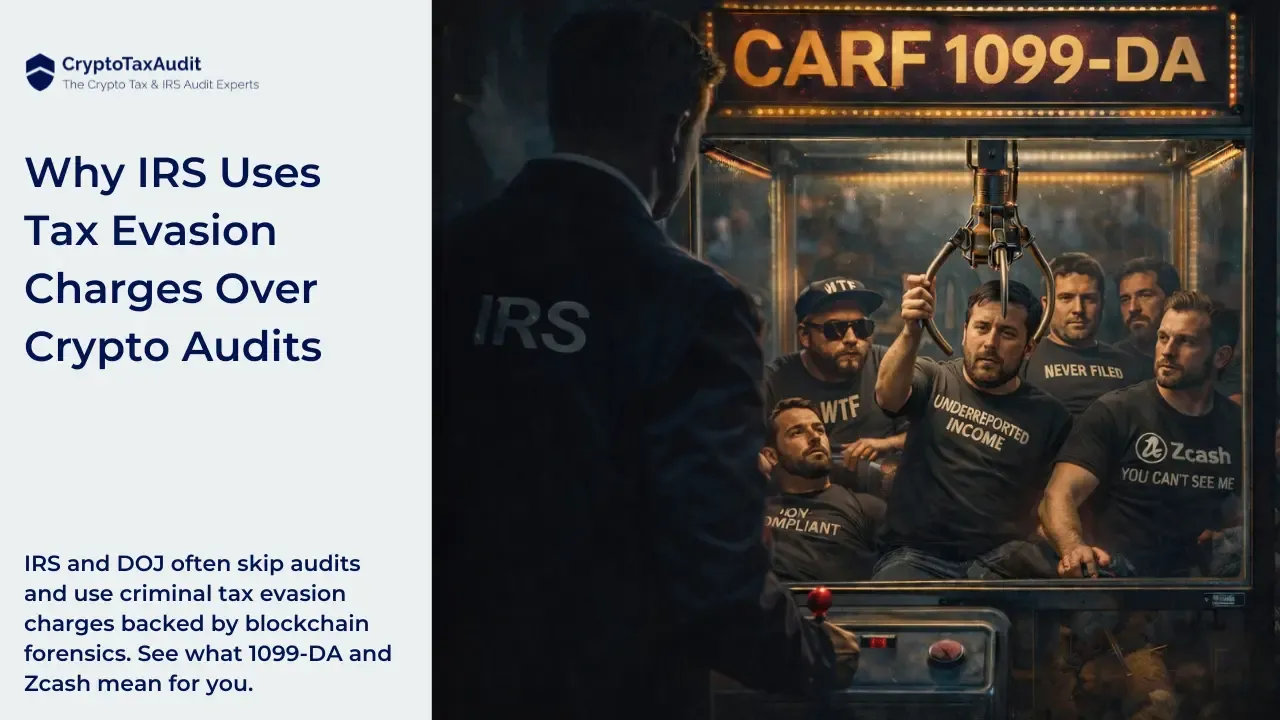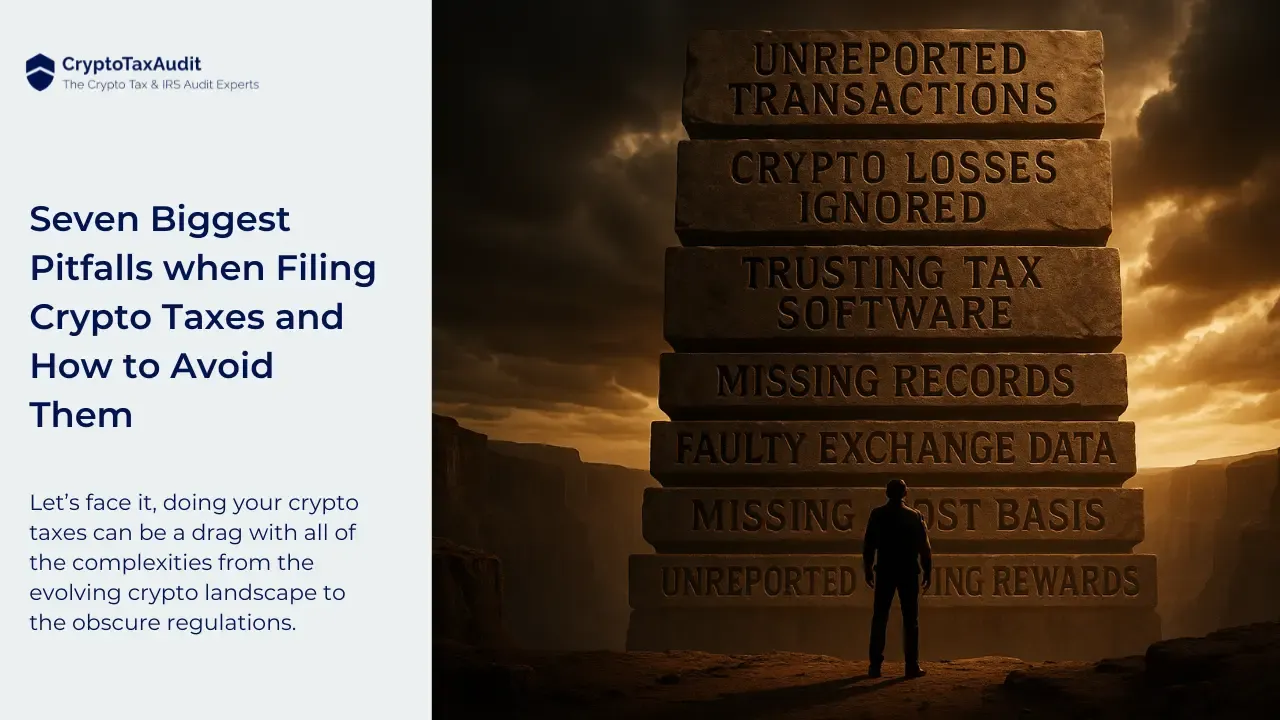
1099-DA Updates: What Crypto Traders and Investors Need to Know Before 2026
Key Takeaways:
- Form 1099-DA begins in January 2026, targeting crypto transactions on centralized exchanges.
- It tracks cost basis, acquisition/sale dates, and gains/losses per trade.
- Unlike 1099-K, it includes detailed transaction data; unlike 1099-B, it's crypto-specific.
- The IRS will auto-flag mismatches between 1099-DA and your tax return.
If you’re holding crypto on a centralized exchange, your reporting game is about to change.
The IRS has introduced a new form—Form 1099-DA—and it’s going to reshape how crypto gets reported starting in January 2026.
If you think this is just another boring form letter, think again.
This one is built to track every buy, sell, trade, and swap—with the goal of eliminating underreporting once and for all.
So what exactly is Form 1099-DA? How is it different from the 1099-K or 1099-B? And why should you care right now?
Let’s break it down.
What Is Form 1099-DA?
Form 1099-DA is the new standardized tax form for digital asset transactions.
It’s the IRS’s way of saying, “No more guesswork.” Starting in 2026, centralized exchanges will be required to issue this form to report:
- Crypto sales and dispositions
- Dates acquired and sold
- Cost basis and proceeds
- Gain or loss for each transaction
Sound familiar? That’s because it mirrors the structure of Form 1099-B, the traditional form brokers use to report stocks and bonds.
But this time, it’s crypto—and the goal is total transparency.
How Does It Compare to 1099-K and 1099-B?
Let’s clear up the confusion:
- 1099-K: This is a general-purpose form for reporting third-party payments. Some exchanges have used it to report staking or reward payouts, but it doesn’t include cost basis or gains. It’s basically just a “gross receipts” form.
- 1099-B: This is what you get from a traditional brokerage account. It shows every trade with acquisition date, sale date, cost basis, and gain/loss.
- 1099-DA: Think of it as the crypto version of the 1099-B—with one big difference: it’s tailored for digital assets.
Expect it to become part of a composite 1099 package, much like traditional brokerages send:
- 1099-INT for interest
- 1099-DIV for dividends
- 1099-B for trades
- 1099-DA for digital assets
If your tax return doesn’t match what the IRS receives from these 1099s, expect a CP2000 letter in your mailbox—along with a proposed tax bill.
Why This Matters Now (Even Though It Starts in 2026)
Sure, the 1099-DA won’t be issued until 2026 for the 2025 tax year. But here’s the catch: the data that shows up on that form is already being captured.
If your records are sloppy, your cost basis is missing, or your internal transfers aren’t tracked properly, the IRS might assume a gain where there wasn’t one—and that could trigger a hefty tax bill.
Once the 1099-DA becomes standard, the IRS will expect your return to match it exactly. Any mismatch? You’ll get flagged.
What You Should Be Doing Right Now
Here’s how crypto traders and investors can stay ahead of the 1099-DA rollout:
✅ Start tracking your cost basis for every transaction
If you can’t prove what you paid, the IRS may assume it was zero. That’s a tax nightmare.
✅ Archive your exchange and wallet histories annually
Don’t wait for exchanges to go dark. Back up everything—CSV files, API exports, screenshots.
✅ Clean up internal transfers
Transfers between your own wallets should be labeled and documented. Otherwise, the IRS might count them as sales.
✅ Don’t rely on 1099-DA to tell your full story
These forms will help—but they won’t capture every nuance. Especially if you’re trading across DEXs, self-custody wallets, or obscure platforms.
Need Help Before the IRS Gets the Full Picture?
At CryptoTaxAudit, we help crypto traders and investors get their records straight—before the IRS comes asking.
From fixing missing cost basis to reconciling exchange histories, we make sure your tax filings line up with what the IRS will see on your 1099-DA.
And if the IRS sends you a letter?
We don’t just prep returns—we defend them.
🔒 Don’t wait for 2026 to clean up your crypto tax records.
Get ahead of the 1099-DA shift now at CryptoTaxAudit.com
Related Articles: FIFO, LIFO, HIFO Explained – Optimizing Your Crypto Taxes
FAQ
Q: What is Form 1099-DA?
A: A new IRS form requiring exchanges to report crypto trades, dates, cost basis, and gains/losses.
Q: How is it different from 1099-K or 1099-B?
A: 1099-DA is specific to digital assets and includes detailed tax data, unlike the generic 1099-K or equity-based 1099-B.
Q: Why care now if it starts in 2026?
A: The IRS is already collecting data. Mistakes now can become audit flags later.
Q: What steps should I take now?
A: Track all cost basis, save annual history, clean up wallet transfers, and document trades beyond just relying on IRS forms.
Q: Can CryptoTaxAudit help if I’m behind?
A: Yes—they offer forensic crypto accounting, audit defense, and full 1099-DA readiness.





